
Nashville, Tennessee—Bellissima, the latest automotive exhibition curated by Ken Gross, now open at The Frist Center for the Visual Arts, grabs visitors right away with the BATs, Alfa Romeo’s trio of futuristic 50’s concept cars. These winged beauties, drawn by Franco Scaglione of Carrozzeria Bertone, are designed to cut the air with a minimum of drag and enhanced stability. “You really have to see these cars from the back,” says Gross. “You can see why they called them BATs. It actually stands for Berlinetta Aerodinamica Tecnica but I’m sure that acronym is not an accident.”

Bellissima follows up on the success of the Frist’s 2013 exhibition, Sensuous Steel – Art Deco Automobiles, that Gross also curated. “Ken posed the idea of the Italian postwar car exhibit,” says Frist Chief Curator Mark Scala.
“We wanted to present an automobile exhibition that was substantially different in every way—different cars, different era, and so forth,” says Gross, adding, “The period just before these cars were developed was a pretty tough one in Italy. The war had caused immense destruction. But the indomitable Italian creative spirit quickly brought Italian fashion, architecture, automobiles, engineering, and design to the forefront.”

The BATs exemplify progressive engineering and design, but what about the rather plain-looking 1950 Cisitalia 202 SC in next gallery? “The Cisitalia was a real breakthrough in its era because of its smooth lines, its fastback roof, and the fact that the hood line is lower than the fenders,” says Gross. Notably, a Cisitalia 202 Coupe appeared in the seminal 1951 car exhibition, 8 Automobiles, at New York City’s Museum of Modern Art.

Alongside the Cisitalia is a Zagato-bodied 1955 Maserati A6G 2000 that looks like a cat ready to pounce. According to Gross, “Its lightweight aluminum body is so fragile that if you push on it you could probably dent it.” Rescued from a sealed garage in Sicily in the late 1990s, it was completely restored and has twice won its class at the Pebble Beach Concours d’Elegance.

The 1953 Fiat 8V Supersonic across the room spent more than five decades with its original owner and was never restored. “I had the opportunity to get a car that basically had never been touched in 60 years,” says Gross. “You restore a car and they’re beautiful but all the evidence of its life goes away. I have nothing against restored cars, I think they’re fabulous but I would prefer, when I can, to have at least one or two original cars.”
Leaving the three Berlinettas behind, visitors enter the company of greatness in the form of the Ferrari 250 GTO, a car Robert Cumberford calls, “the ultimate expression of the classical front-engine racing sports car.” This particular GTO—which raced successfully at Sebring and Le Mans—stands comfortably in the corner of its own room, but its out-sized personality is almost too big for the space allotted.


“You can’t talk about Italian design and engineering on wheels without talking about two wheels,” says Gross. Two 750cc bikes—a 1973 MV Agusta Sport with a transversely mounted 4-cylinder engine, and a 1974 Ducati 750 Super Sport with a 90 degree V-twin—represent the best of their day, but the 500c 1957 Moto Guzzi V-8 steals the show with its menacing stance and “dustbin” fairing. “The Guzzi V-8’s top end, with tall gearing, was 172 mph, an unheard-of speed in that era for a racing motorbike,” says Gross.
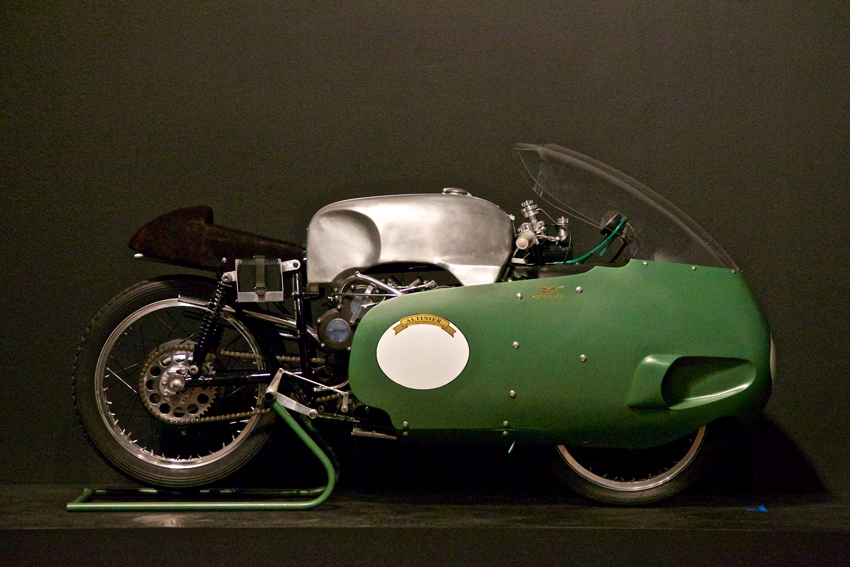

The ‘Styling Gems’ in the next gallery include a Pininfarina-bodied 1952 Lancia Aurelia PF200 Spyder with a gaping grill that resembles the air intake of an F-86 Saber jet. Across the way is a lovely 1961 Ferrari 400 Superamerica—a lush and expensive automobile whose deep blue paint seems to swallow light. The custom-bodied, metallic champagne 1946 Alfa Romeo 6C 2500 S offers a nice contrast with its more formal stance, horizontal accents, and playful Italian flag hood ornament.


“When an American manufacturer wanted something special and classy, it gave the commission to an Italian coachbuilder,” Gross writes in the show notes. The Vignale-bodied 1952 Cunningham C3 Continental is a prime example; it lights up the room with its perfect proportions and elegant detailing. Knowing there’s a thundering Chrysler Hemi V-8 under its alloy hood makes it that much more appealing.

The 1963 Chrysler Turbine Car, though bodied by Ghia, looks like a cross between a 1964 Dodge Polara and a Ford Thunderbird of the same year. Its unusual burnished orange interior may be its most attractive feature.


“We have the Lincoln show car—one of a kind—done by Boano coachworks,” Gross continues, referring to the bright orange 1955 Lincoln Indianapolis. “It has every cliché they could pile on as if to say, ‘We understand Americans.’ It has wrap-around windshields front and back, pipes on the side, and the it’s on a massive scale.” Enough said.
Next, the exhibition opens onto a spacious gallery of five disparate automobiles that manage to complement each other. The Gandini-designed 1970 Lamborghini Miura S with its mid-mounted, transverse V-12 still looks striking today—60 years after its debut. Ken Gross aptly describes it as, “a stiletto on cast magnesium wheels,” compared to contemporary Ferraris.

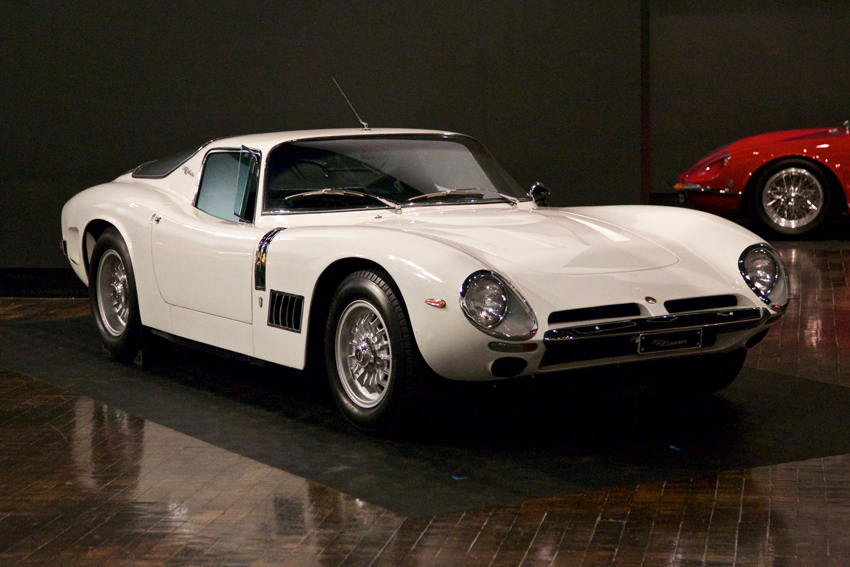
The 1968 Bizzarrini 5300 Strada represents another interpretation of the mid-engine sports car. Giugiaro’s intriguing body shape wraps around a chassis that mounts a highly modified Chevy V-8 just forward of the cabin.
In an alcove off the main room sits the diminutive 1963 ATS 2500 GT. It’s a tidy package created by a group of eight key Ferrari employees who left the firm to build their own mid-engined road/race car while Ferrari was still clinging to the front-engine paradigm. The mid-mounted, 2.5 liter V-8 engine is prominently displayed behind a particularly large backlight.
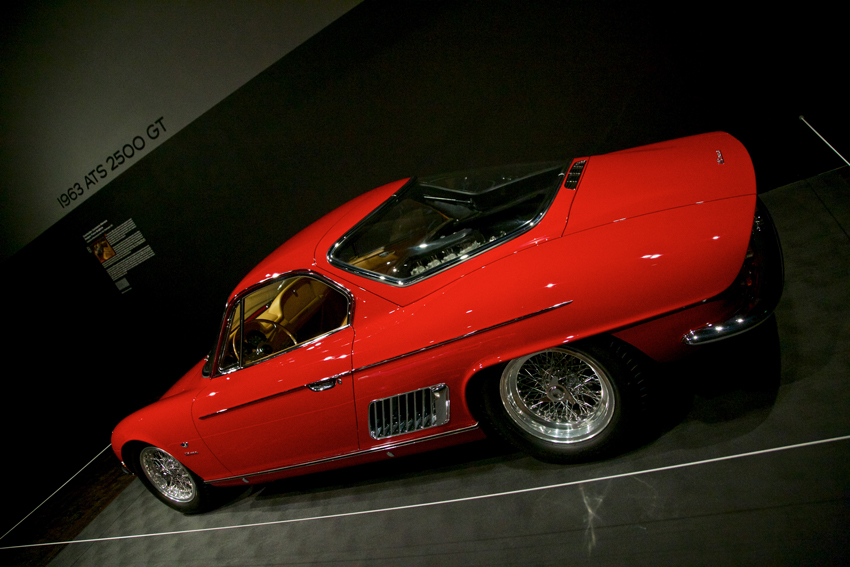

If the 1955 Gilda Ghia were a county song it would be a slow ballad sung by Dolly Parton; its proportions are wildly exaggerated but it’s beautiful and glamorous and you just can’t stop looking.
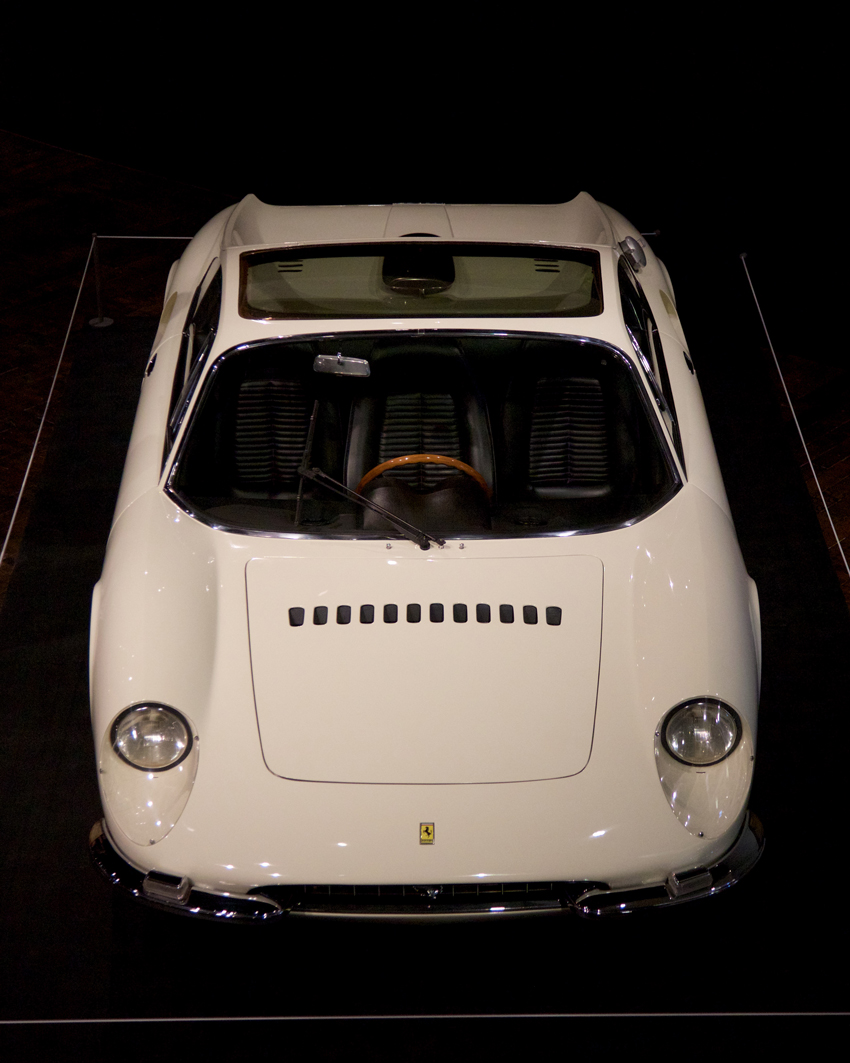
The 1966 Ferrari Tre Posti nearby is a well-proportioned, mid-engined V-12 prototype with room for three: the driver sits in the center with passengers set back on each side. This example—one of two made—is on loan from Luigi Chinetti Jr., son of the famous race car driver and Ferrari importer, who says, “If Ferrari had built it, no one would have given a second thought to the Miura.”

Finally, there is the impossibly low 1970 Lancia HF Zero which benefits from an 8-inch platform that brings it up to waist height. Drawn by Gandini for Carrozzeria Bertone, it was built in secret using salvaged chassis components with an aim to solicit business from Lancia. It’s an imaginative design, beautifully executed, and fully functional.

In presenting a mix of concept, custom-bodied, and production cars, Bellissima offers the cutting edge of Italian automotive design during a time of rapid development. The cars are arrayed at various angles on platforms or on the floor; solo, in pairs, or in groupings, they offer compelling comparisons, alluring angles, and importantly—room for the cars to breathe.
Ken Gross has been on a roll since 2010 when he curated his first solo exhibition, The Allure of the Automobile, at the High Museum in Atlanta. Exhibitions in Portland, Salt Lake City, Nashville, Atlanta, Raleigh, and Houston followed. Gross creates the concept for each exhibition, develops the checklist of cars, writes the didactic materials and catalog, and develops the audio tour. But his greatest skill may be his ability to assemble such remarkable, varied, and priceless automobiles.
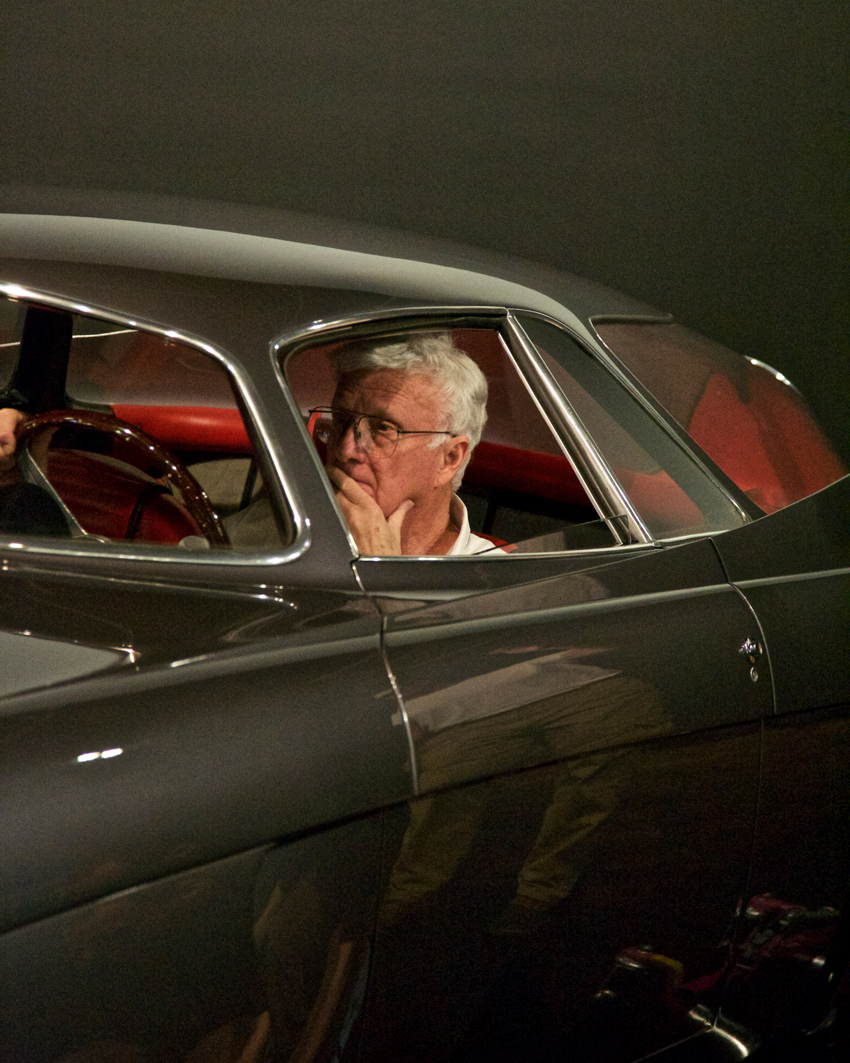
“You need to know all the collectors,” says Gross. “After 27 years at Pebble Beach, five years at the Peterson Museum, and 40 years in the old car hobby, I’m fortunate to know almost all of the collectors.” He adds, “They’re excited about the notion of their cars in an art museum. This is not like a concours d’elegance where somebody wins and everyone else doesn’t. Here they’re all winners. They find that very exciting.”
“Bellissima!” At the Frist Center for the Visual Arts, runs from May 27 through October 9, 2016. The Frist Center is located at 919 Broadway, Nashville, TN 37203. Visit https://www.fristcenter.org or call 615.244.3340 for more information.




